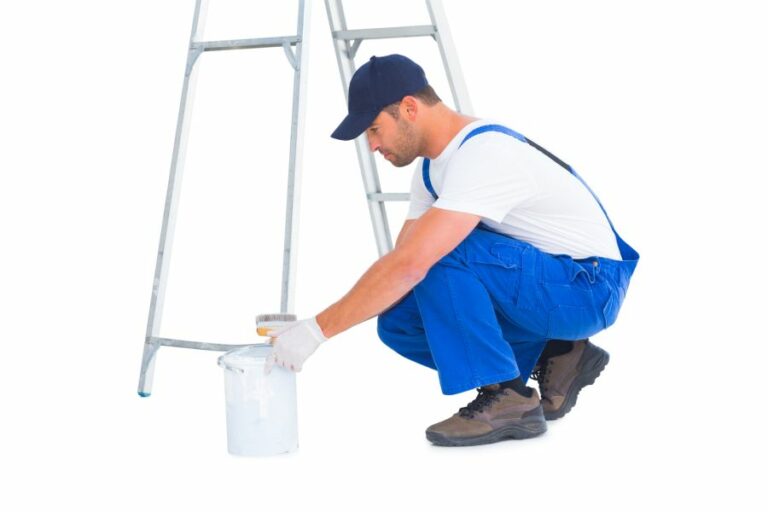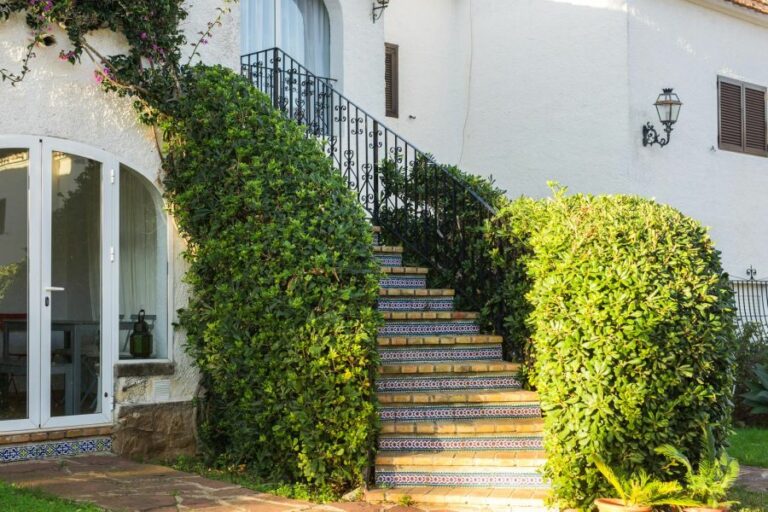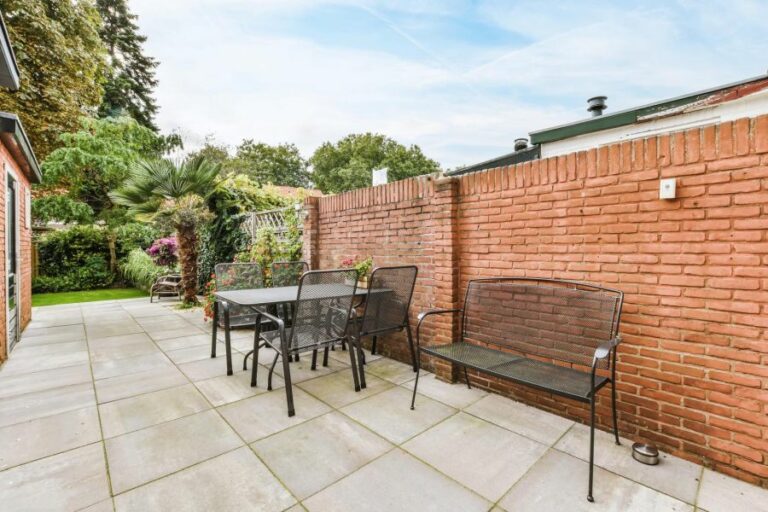Non-Slip Outdoor Paint, 25 Things You Should Know
Non-slip outdoor paint offers a practical solution for preventing accidents and improving safety in high foot-traffic areas prone to becoming slippery. Our blog post explores the various non-slip paints, their advantages, and how to choose the perfect option for your outdoor space. Whether it’s a patio, poolside, driveway, or walkway, we’ll guide you step by step, sharing tips and expert advice on application techniques and maintenance.
Non-slip outdoor paint:>
Non-slip outdoor paint is crucial for creating safe, slip-resistant surfaces in various outdoor areas, reducing accidents, and providing durability, aesthetics, and low maintenance. Different non-slip paints provide traction for concrete, wood, and metal surfaces. Proper surface preparation, including cleaning, repairing, and etching, is essential for long-lasting results. Non-slip outdoor paint improves safety and the appearance of outdoor spaces, offering versatile, cost-effective solutions that can withstand harsh conditions and heavy foot traffic.

Discover the transformative power of non-slip outdoor paint, ideal for enhancing safety and aesthetics in your space. Unravel expert recommendations, application tips, and maintenance insights to ensure a durable, weather-resistant, and skid-free surface that complements your property.
Contents
- 1 Anti-Slip Exterior Paint for Outdoor Surfaces
- 2 Is Anti-Slip Paint Effective in Preventing Slips and Falls?
- 3 How can exterior paint be modified to have a non-slip finish?
- 4 What is the Most Effective Non-Slip Paint for Concrete Surfaces?
- 5 Is there an existence of non-slip paint on the market?
Anti-Slip Exterior Paint for Outdoor Surfaces
Creating a safe, slip-resistant surface is essential for many outdoor applications, from walkways, patios, and staircases, around swimming pools, to balconies and courtyards. Non-slip outdoor paint is an easy and effective way to ensure the safety of your outdoor areas.
• The Importance of Non-Slip Outdoor Paint
A slip-resistant surface reduces the risk of accidents and injuries, especially in areas that are exposed to water, moisture, and environmental factors. Non-slip outdoor paint not only provides a protective and durable surface but it also enhances the overall appearance of your outdoor space.
– Benefits of Non-Slip Outdoor Paint
- Safety: Reduces the risk of accidents caused by slippery surfaces.
- Durability: Can withstand heavy foot traffic, weather, and harsh environmental conditions.
- Aesthetic Appeal: Enhances the appearance of your outdoor space with a clean, uniform finish.
- Low Maintenance: Requires minimal effort to keep the surface clean and well-maintained.
- Versatility: Can be applied to a variety of surfaces, including concrete, wood, and metal.
- Ease of Application: Simple and straightforward process making it a cost-effective solution for homeowners and professionals alike.
• Types of Non-Slip Outdoor Paint
Various types of non-slip outdoor paints are available on the market, each with its unique features and benefits. Some of the most common types are:
– Anti-Slip Floor Paint
Anti-slip floor paint is ideal for concrete or asphalt surfaces around swimming pools, garages, parking lots, and other high-traffic areas. They contain fine aggregates that create a textured surface that improves traction and reduces the risk of slipping.
– Textured Concrete Coatings
Textured concrete coatings are designed to create a slip-resistant surface on concrete or masonry. These coatings may contain epoxy or acrylic resins combined with sand, rubber, or other aggregates to create a textured finish.
– Non-Slip Wood Deck Paint
Non-slip wood deck paint contains additives that provide extra grip on wood surfaces, creating a safer walking surface in outdoor settings. It helps to protect the wood from weathering and damaging UV rays while also preventing mold and mildew buildup.
– Anti-Slip Rubberized Paint
Anti-slip rubberized paint contains rubber particles that create a textured, slip-resistant surface. This type of paint is usually applied to metal surfaces, such as stairs, ramps, and walkways to provide safety and traction.
• Preparing the Surface for Non-Slip Outdoor Paint
Proper surface preparation is crucial in ensuring long-lasting, effective results.
– Cleaning
Begin by cleaning the surface thoroughly, removing dirt, oil, grease, and other contaminants. A pressure washer or hose, along with a stiff brush, can be used to clean the surface.
– Repairing Cracks and Holes
Repair any cracks, holes, or damages in the surface using a suitable filler or patching compound. Allow the repairs to dry completely before proceeding.
– Etching (For Concrete Surfaces)
For concrete surfaces, etching is necessary to ensure proper adhesion of the non-slip paint. Use a concrete etching solution, following the manufacturer’s instructions carefully. Rinse the surface thoroughly and allow it to dry before applying the paint.
• How to Apply Non-Slip Outdoor Paint
Once your surface is prepared, it’s time for the application of non-slip outdoor paint.
- Choose the Right Paint: Select the appropriate paint based on the type of surface, desired finish, and specific requirements of your project.
- Mix the Paint and Additive: Some non-slip paints require the addition of a non-slip additive to create a textured surface. Follow the manufacturer’s instructions for the correct mixing ratios.
- Apply the Paint: Use a roller or brush to apply an even and consistent layer of paint on the surface. Work in sections, applying the paint evenly.
- Allow to Dry: Allow the paint to dry according to the manufacturer’s recommended drying times. A second coat may be necessary for optimal coverage and durability.
- Apply a Sealant (Optional): In some cases, a sealant may be applied to enhance the durability and longevity of the paint.
• Recommendations
Based on our experience, we recommend the following non-slip outdoor paint products:
- Rust-Oleum Anti-Slip Spray Paint: Ideal for small projects and touch-ups on various surfaces, including wood, metal, and concrete.
- INSL-X Sure Step: A durable, slip-resistant paint suitable for high-traffic areas such as stairs, walkways, and patios.
- TotalBoat TotalTread Non-Skid Deck Paint: An excellent choice for wooden decks, offering good protection against weathering.
In conclusion, non-slip outdoor paint is an effective solution for improving the safety and appearance of your outdoor spaces.
With proper surface preparation and application, it offers a durable, low-maintenance, and slip-resistant surface that can withstand harsh weather conditions and heavy foot traffic. Consider the different types and their applications to ensure you make the best decision for your project.
Is Anti-Slip Paint Effective in Preventing Slips and Falls?
• Introduction
In our daily lives, we often encounter slippery surfaces that pose major hazards, especially during wet or icy conditions. This is where anti-slip paint comes into play. But the pressing question on everyone’s mind is: does it actually work?
• Understanding Anti-Slip Paint
Anti-slip paint is a type of coating applied to surfaces to improve traction and prevent or reduce slip-related accidents. It contains various abrasive materials, such as sand, rubber, or crushed walnut shells, which create a rough texture when dried.
This texture improves grip and prevents slipping, making it a suitable choice for various surfaces like concrete, metal, and wood.
– Different Types of Anti-Slip Paint
There are several types of anti-slip paint available in the market, each with its own benefits and drawbacks. Let’s have a closer look at them:
1. Epoxy Resin-Based Anti-Slip Paint
Epoxy resin-based anti-slip paint is a two-component product comprising a base and hardening agent, which, when mixed, form a highly durable and resistant coating. It is suitable for heavy traffic areas, such as commercial or industrial spaces.
2. Pre-Mixed Anti-Slip Paint
Pre-mixed anti-slip paint contains its abrasive material mixed into the paint. These are convenient and easy to use, but they may not provide consistent grip since the abrasive material can settle at the bottom.
3. Anti-Slip Additives
Anti-slip additives are not paints but rather materials added to regular paint to give it anti-slip properties. The user can control the degree of grip by altering the amount of additive mixed into the paint.
– Factors to Consider when Choosing the Right Anti-Slip Paint
When selecting the appropriate anti-slip paint, it is important to consider factors such as weather conditions, expected foot traffic, and the type of surface being coated. For instance, paint suited for outdoor use on wooden surfaces may not be suitable for indoor concrete flooring.
• Assessing the Effectiveness of Anti-Slip Paint
The effectiveness of anti-slip paint is dependent on several factors, which include:
1. Surface Preparation
Proper surface preparation is crucial in ensuring the optimum bond between the paint and the surface. This includes cleaning, repairing any damage, and priming the surface. Poor surface preparation can result in the coating peeling off or not providing adequate slip resistance.
2. Application Technique
Most anti-slip paints require specific application techniques to ensure they perform as intended. These methods may involve using rollers, brushes, or sprayers, as well as ensuring a consistent thickness for the paint. Failing to adhere to these application methods can affect the paint’s performance.
3. Cure Time
The cure time for anti-slip paint varies depending on the type, humidity, and temperature. It is essential to allow the paint to cure fully before subjecting it to foot traffic. Attempting to use the painted area before proper curing might reduce the paint’s effectiveness.
4. Maintenance
Regular cleaning and maintenance of the coated surface will help maintain its slip-resistant properties. With time, debris and dirt can accumulate on the surface, reducing its grip. Periodic cleaning and re-application of the paint when necessary can help sustain its effectiveness.
• Recommendations and Personal Experience
In my experience, anti-slip paint has proven effective in preventing slip accidents on various surfaces. However, the product’s success hinges on users properly following the manufacturer’s instructions for surface preparation, application, and maintenance.
I recommend using a high-quality epoxy resin-based anti-slip paint for heavy traffic areas, as it offers better durability and slip resistance compared to other alternatives.
However, for surfaces that encounter moisture frequently, such as pool decks or boat ramps, opting for a paint specifically designed for wet conditions may be more suitable.
It is also essential to choose a product that meets the applicable industry standards for slip resistance, such as the American National Standards Institute (ANSI) or ASTM International standards, to ensure its effectiveness and safety.
• Conclusion
In summary, anti-slip paint does work, provided that the right type is selected and applied correctly. Proper surface preparation, application technique, and maintenance are crucial for ensuring the optimum performance of anti-slip paint.
By taking these factors into account, you can significantly reduce the risk of slip-related accidents and create a safer environment for yourself and others.
How can exterior paint be modified to have a non-slip finish?
When it comes to exterior surfaces, safety should always be a top priority. Applying non-slip paint to your outdoor walkways, stairs, and patios can help prevent accidents and make your space safer for everyone.
• Choosing the Right Non-Slip Additive
The first step in making exterior paint non-slip is to choose the appropriate additive. Additives come in a variety of materials, each offering different levels of slip resistance and durability. Here are some popular options:
– Sand
Sand is a common and affordable non-slip additive for exterior paint. It provides a gritty texture that increases traction, making it an excellent choice for DIY projects.
To use sand as a non-slip additive, simply mix it into your paint at a ratio of 1:1 or adjust accordingly to achieve the desired level of slip resistance.
– Polymeric Aggregate
Polymeric aggregate is a type of synthetic, non-abrasive additive made from small plastic beads. It offers improved slip resistance compared to sand without a rough texture. This additive is readily available at most paint and home improvement stores.
The recommended ratio for mixing polymeric aggregate into your paint is approximately 3 ounces per gallon of paint.
– Clear Grit
Clear grit is a fine, translucent additive made from crushed glass or polymer. It provides a subtle, slip-resistant surface without affecting the appearance of the paint color. Clear grit is an excellent option if you want to maintain the visual appeal of your painted surfaces.
The mixing ratio for clear grit will vary depending on the product, so always consult the manufacturer’s instructions for accurate results.
• Preparing the Surface
Before applying your non-slip exterior paint, it is essential to adequately prepare the surface. Proper preparation helps ensure a successful result and minimizes the risk of peeling, flaking, or premature wear.
– Cleaning
Remove dirt, debris, and loose paint by sweeping or power washing the surface. Allow the surface to dry completely before moving on to the next step.
– Repairing
Examine the surface for cracks, holes, or other damages. Fill in minor imperfections with an exterior patching compound, and allow it to dry according to the manufacturer’s recommendations. Where required, sand the patched areas smoothly.
– Priming
Applying a high-quality primer will help create a strong bond between the paint and your surface. Choose an exterior primer appropriate for your material- wood, concrete, or metal, and follow the manufacturer’s instructions for application.
• Mixing and Applying Non-Slip Paint
Once your surface is prepared, it’s time to mix and apply your non-slip exterior paint.
– Mixing
In a large bucket or container, thoroughly mix your chosen paint with the non-slip additive according to the recommended ratio. It is crucial to stir the mixture consistently throughout the painting process to ensure an even distribution of the additive.
– Application
Using a paint roller or brush, apply the non-slip paint onto the surface in smooth, even strokes. Start from one corner or edge and work your way across the surface, making sure to overlap your strokes slightly for even coverage.
Apply at least two coats of paint, allowing each coat to dry according to the manufacturer’s recommendations.
Pro Tip: When painting stairs or other areas with a higher risk of slipping, consider applying additional layers of non-slip paint to increase slip resistance.
• Maintaining Your Non-Slip Surface
To keep your non-slip exterior paint looking fresh and functioning effectively, regularly check for signs of wear or damage. Clean the surface with a gentle detergent and water, taking care not to scrub or scratch the non-slip finish.
If you find areas where the paint has worn or peeled, lightly sand the affected area and apply a new coat of non-slip paint. By maintaining your non-slip surfaces, you can ensure long-lasting safety and appearance.
In conclusion, making your exterior paint non-slip is a relatively simple process that can significantly improve the safety of your outdoor spaces.
By selecting the right non-slip additive, preparing your surface, and applying the non-slip paint correctly, you can enjoy a safer and more attractive outdoor environment.
Step | Description |
|---|---|
1 | Choose the right paint: Select a high-quality exterior paint with a satin or semi-gloss finish to ensure a slip-resistant surface. |
2 | Prepare the surface: Thoroughly clean the surface to be painted, removing any dirt, debris, or loose paint. If needed, sand the surface to create a smooth, even base for the paint. |
3 | Add non-slip additives: Mix non-slip additives, such as sand or fine-grit additives, into the paint according to the product instructions. This will increase traction when the paint is dry. |
4 | Apply the paint: Use a paint roller or brush to apply the paint with added non-slip additives evenly and smoothly to the surface, ensuring full coverage. Allow the paint to dry completely. |
5 | Apply a second coat: If necessary, apply a second coat of paint to the surface, following the same steps as before. Allow the second coat to dry completely for optimal slip resistance. |
What is the Most Effective Non-Slip Paint for Concrete Surfaces?
Concrete surfaces can often become slippery and pose a potential risk for accidents, particularly in areas exposed to moisture or high foot traffic. To address this issue, non-slip paint for concrete has become an essential tool in ensuring safety and durability.
• Understanding Non-Slip Paint
Non-slip paint, also referred to as anti-slip paint, is a type of coating applied to concrete surfaces to increase traction and reduce the risk of slipping or falling. The paint achieves this by incorporating fine granules or textured additives that create a rough surface when dried.
These additives could be made from sand, aluminum oxide, or rubber-based materials, enhancing the grip and making the concrete surface safer.
• Types of Non-Slip Paint for Concrete
There are several types of non-slip paint available for concrete surfaces, each with unique properties and applications.
– Epoxy-Based Paint
Epoxy-based non-slip paint is a popular choice for its durability and resistance to chemicals, oils, and water. It forms a strong bond to the concrete surface and creates a tough, long-lasting finish. Epoxy-based paint typically contains additives such as sand or aluminum oxide to provide the non-slip feature.
I recommend epoxy-based paint for high-traffic indoor areas or garage floors, as it can withstand heavy foot traffic and resist wear and tear.
– Acrylic and Water-Based Paint
Acrylic non-slip paint is water-based, making it more environmentally friendly and easier to clean up compared to other types of paint. It provides a durable and UV-resistant finish, making it ideal for outdoor concrete surfaces exposed to sunlight.
As with epoxy-based paint, acrylic paint incorporates additives such as sand to enhance grip.
I recommend acrylic non-slip paint for outdoor surfaces like patios, pool decks, or walkways that require a balance of durability and ease of application.
– Polyurethane-Based Paint
Polyurethane non-slip paint is known for its flexibility, resilience, and excellent weather resistance. This type of paint is more expensive than epoxy and acrylic alternatives, but it is well-suited for surfaces that require a durable yet flexible coating.
I recommend polyurethane-based paint for areas prone to temperature fluctuations, expansion, or contraction, as it can withstand these conditions without cracking or peeling.
• Factors to Consider When Choosing Non-Slip Paint for Concrete
To determine the best non-slip paint for your concrete surface, consider the following factors:
– Surface Location and Usage
The location and usage of the concrete surface play a significant role in determining the most suitable non-slip paint.
For example, indoor surfaces with heavy foot traffic or exposure to chemicals will benefit from epoxy-based paint, whereas outdoor surfaces exposed to moisture, UV rays, or changing temperatures may require acrylic or polyurethane-based paint.
– Prep Work and Application
Applying non-slip paint to concrete requires proper surface preparation to ensure sufficient adhesion and optimal performance. Each type of paint has specific preparation steps, such as cleaning, etching, or priming the surface.
Be sure to follow the manufacturer’s instructions for both surface preparation and paint application.
– Maintenance and Lifespan
The durability and lifespan of the non-slip paint are crucial factors to consider, especially for high-traffic surfaces or areas exposed to harsh environmental conditions. Epoxy-based paint generally offers a longer lifespan and lower maintenance requirements compared to acrylic or polyurethane-based paint.
– Aesthetics
Non-slip paint is available in various colors, finishes, and textures. Consider what appearance will best suit your space and meet your aesthetic preferences. Keep in mind that some non-slip additives may affect the overall appearance of the surface.
• Top Non-Slip Paint Brands for Concrete
There are a variety of highly recommended non-slip paint brands available on the market. Some top choices include:
- Sherwin-Williams
- Rust-Oleum
- PPG
- BEHR
- Durabak
These brands offer a range of non-slip paint options for concrete surfaces, each with unique features and benefits.
• Safety, Durability, and Peace of Mind
In conclusion, non-slip paint for concrete surfaces is a valuable investment in safety and durability. With various paint types available, it is essential to assess the location, usage, and specific needs of your concrete surface to determine the best option.
By properly preparing and applying the appropriate non-slip paint, you can create a safer and more visually appealing environment.
Product Name | Features |
|---|---|
Rust-Oleum AS5600 Anti-Slip Paint | Highly durable, barefoot-friendly, easy to apply |
INSL-X Sure Step Acrylic Anti-Slip Coating Paint | Long-lasting, water-based, slip-resistant, durable |
KILZ Over Armor Textured Concrete Paint | Weather resistant, can be used on various surfaces, slip-resistant |
RTG Deck, Porch, Patio Anti-Slip Paint | Easy to apply, fast-drying, non-slip, versatile |
Durabak Outdoor Textured Paint | UV resistant, flexible, waterproof, slip-resistant |
Is there an existence of non-slip paint on the market?
When it comes to ensuring safety and reducing the risk of slips and falls, many people wonder if there’s such a thing as non-slip paint. As an expert in the field, I can confidently tell you that there is!
• What Is Non-Slip Paint?
Non-slip paint, also known as anti-slip paint, is a type of coating that can be applied to various surfaces to create a slip-resistant finish. This is achieved by adding special aggregates or particles to the paint mixture, which increases friction and reduces the chance of slipping.
Non-slip paint can be applied to a wide range of surfaces, including concrete, wood, metal, and tiles. These paints come in various colors and finishes to suit different applications and aesthetic preferences.
• Applications of Non-Slip Paint
– Residential Spaces
Non-slip paint can prove to be immensely beneficial in residential areas where slipping hazards are common, such as stairs, garage floors, pool decks, patios, and entryways. Applying non-slip paint to these surfaces not only enhances safety but also helps maintain their appearance and longevity.
– Commercial and Industrial Facilities
In commercial and industrial settings, non-slip paint plays a crucial role in maintaining safety standards and preventing accidents.
Workspaces like warehouses, factory floors, ramps, loading docks, and walkways can greatly benefit from a layer of non-slip paint to ensure smooth operations and minimize workplace injuries.
– Public Areas
In public spaces like schools, hospitals, malls, and parks, non-slip paint can offer numerous safety benefits by reducing the potential for slips and falls. This is particularly important in high-traffic areas where a large number of people walk on a daily basis.
• Benefits of Non-Slip Paint
– Enhanced Safety
The primary benefit of non-slip paint is that it reduces the risk of accidents caused by slippery surfaces. This is particularly crucial in wet or damp conditions, which can make surfaces increasingly treacherous.
– Durability
Non-slip paint can protect surfaces from wear and tear, adding an extra layer of durability. This is particularly useful for heavily trafficked areas or surfaces exposed to harsh weather conditions.
– Easy Application
Applying non-slip paint is a relatively simple process that either professionals or DIY enthusiasts can conduct. With proper surface preparation and the right tools, a durable and effective slip-resistant coating can be achieved.
– Aesthetics
Non-slip paint comes in a wide array of colors, textures, and finishes, making it easy to find an option suitable for your specific application while enhancing the surface’s overall appearance.
• Choosing the Right Non-Slip Paint
There are several factors to consider when choosing a non-slip paint, including the surface material, desired finish, and your specific requirements.
– Surface Material
Certain non-slip paints are better suited for specific surfaces. For example, epoxy-based paints are ideal for concrete surfaces, while acrylic-based paints work well on wood surfaces. Before selecting a non-slip paint, verifying that it is compatible with the material you wish to apply it to is crucial.
– Desired Finish
Non-slip paints come in various finishes, such as matte, semi-gloss, and high-gloss. The chosen finish should align with your aesthetic preferences and the overall appearance of the surrounding area.
– Requirements and Environment
Depending on your specific needs, there may be certain factors to prioritize when selecting non-slip paint. For instance, if you require a chemically resistant coating for an industrial setting, you may need to choose a specifically formulated product to withstand chemicals.
Similarly, if you need non-slip paint for a marine environment, it is essential to choose one designed for water exposure and harsh weather conditions.
• My Recommendations
Based on my experience, here are a few product recommendations for non-slip paint:
- Rust-Oleum Anti-Slip Spray Paint: This is a versatile and cost-effective option suitable for use on various surfaces, including metal, wood, and concrete. It dries quickly and provides a durable slip-resistant coating.
- INSL-X Sure Step Acrylic Anti-Slip Coating: Ideal for wood or concrete surfaces, this paint offers excellent traction and a durable, weather-resistant finish. It is ideal for pool decks, patios, and stairs.
- Durabak Non-Slip Protective Coating: An excellent choice for marine environments or heavy-duty applications, this polyurethane-based paint provides a tough and slip-resistant finish that can withstand harsh conditions.
In conclusion, non-slip paint does exist and plays a significant role in enhancing safety and reducing slipping hazards. By considering the various factors discussed in this article, you can choose the ideal non-slip paint for your specific requirements and enjoy a safe and aesthetically pleasing surface.







